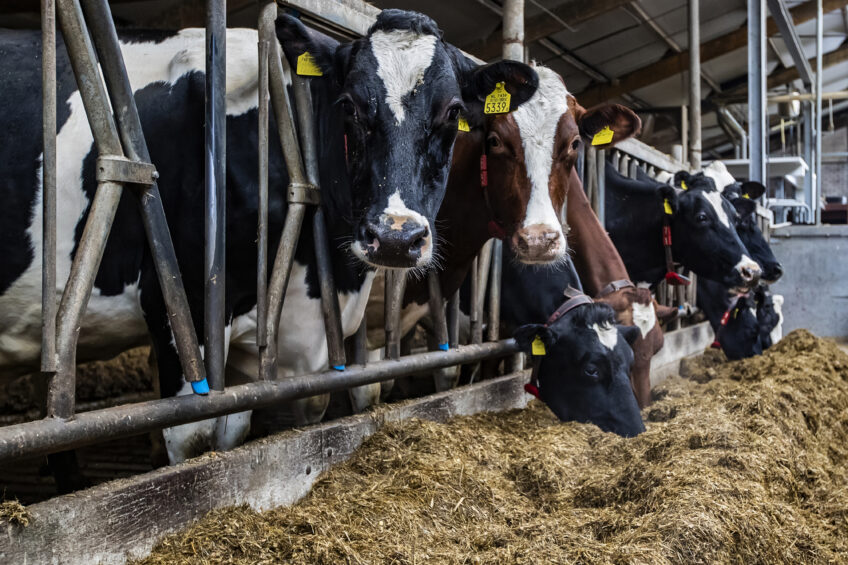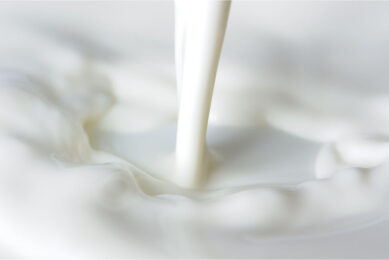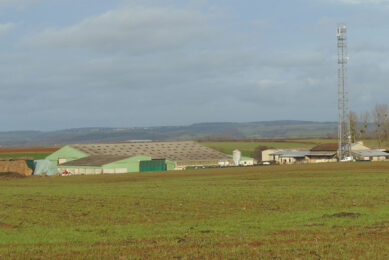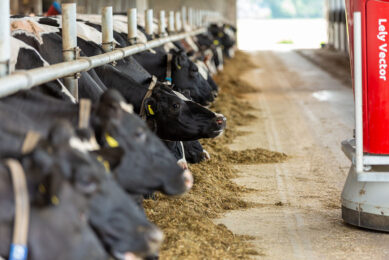Robotic milkers: Where we are and where we’re going

The latest updates on features and capabilities in current models of robotic milkers as well as speculation on system designs of the future.
Because they are reliable, promote excellent cow care and allow farmers to do other farm or off-farm work instead of milking, it’s expected that use of robotic milkers will continue to grow on farms in the developed world in 2021 and beyond.
According to a recent report by Fortune Business Insights, the market for robotic milking systems is expected to rise from US$ 1.25 billion in 2019 to US$ 2.94 billion by the end of 2027.
In terms of robot type, the report finds that in 2019, multi-stall models made up the majority of the global market share, about 44%. Regionally, Europe has been the leading market due to increasing demand there for milk and milk products, strong overall investment in farming technology and high on-farm labour costs. The regions likely to see significant growth in uptake of robotic milkers are North America and Asia Pacific, particularly China and the US, “on account of rising average herd size and the adoption of technological upgradation.”
The ability to milk larger herds robotically has been a focus for BouMatic’s designs in recent years, says Aaron Oughton, product manager for animal environment and refrigeration. “Today, more and more robots are used in larger farms, operating a 24/7 operation in an open free-stall area,” he explains.
 Reaping the rewards of robotic milking
Reaping the rewards of robotic milking
Although there is a wide range in performance between farms, the average dairy farm in Australia has the potential to increase its number of cows by up to 60% by using an automatic milking system (AMS).
Along with systems that are more suitable to larger herds, another design trend in recent years has been an increased level of remote control, for farmers but also for the technical teams at dealerships, explains Jason French, VMS Solution Manager at DeLaval. For example, the DeLaval VMS V300 milking system, launched in 2018 with “DeLaval InControl”, provides farmers with more remote system management options and speeds up the time it might take a troubleshooting team to resolve any issues.

Reduced labour is yet another trend. The VMS V300, for example, has an extremely high attachment accuracy level and does not require “teaching” of teat positions at start-up and when introducing new cows. The new Robomax system from Milkomax also provides faster attachment than previous models.
Costs and comfort
Milkomax has focused over the last few years on developing its robotic (tie-stall) systems to have reduced maintenance costs. Maintenance is reduced, explains Milkomax business relations coordinator Christian Rousseau, through a combination of simpler design and greater reliability. The Robomax also provides energy savings thanks to the electric-only drives of the robotic arm. In addition, “much quieter operation during milking,” says Rousseau, “results in improved animal comfort.”

In its focus on cow comfort, BouMatic has designed its Gemini system to milk cows from the rear, the only milking robot on the market that does so. “This patented design allows the cow to not see the arm of the robot, so cow anxiety is reduced in the box,” Oughton explains.
BouMatic has also focused on cost savings, designing its systems so they are fully upgradable, allowing farmers to add new features instead of replacing the entire system. “We are also the only company on the market with a double box,” says Oughton. “This advantage saves space, investment and construction costs… We also have a self-contained mechanical room inside the robot, reducing construction costs and allowing dairy farmers convenient access to the inner workings of the robot without interrupting the herd.”

DeLaval has also focused in recent years on cow health and milk quality. Its PureFlow system offers teat preparation involving warm water, air and pre-strip as well as highly accurate teat spray after milking, which provides better cow comfort, higher milk quality and increased milk flow.
For higher levels of comfort in its designs, Lely has developed the I-flow setup to facilitate easy walk-in and walk-out. “Once in the robot, during milking, the spacious box gives room to move while the camera observes the movement and steers the robot arm,” explains Bellana Putz, Lely marketing manager. “New to our latest model, Astronaut A5, is that the arm is even faster and more accurate to follow every movement and be completely tension-free once in place.”

Future design plans
Rousseau explains that in the coming years, robotic milker designs will continue to provide improved cow welfare. “Much focus continues to be directed to the area of animal comfort in both tie-stall and free-stall type barns, and it is to be expected that robotic milkers will continue to improve in this area,” he says. “Equipment is being developed with the health and behaviour of each animal in mind.” Operation of equipment will become even quieter, and greater cleanliness of the milking station or stall will increase.
Future designs will also focus on farmer profit, with continued improvements to reduce maintenance as well as operating costs. More energy-efficient technologies, says Rousseau, will enable lower costs of operation as they are incorporated in future robot generations.
Future robotic milkers will also provide more information and customisation, with more support for farmers to use information to improve their herd health and profitability. Lely, for example, plans to improve and extend measurements that provide valuable data, but has also created a “unique consultancy department” called Farm Management Support, which will, says Putz, “support our customers to implement the changes they want to execute going forward in achieving their goals.”
 Global market for ag robots to double in 5 years
Global market for ag robots to double in 5 years
According to a recent study from Dutch ABN AMRO bank, the worldwide market for agricultural robots can double in size in 5 years’ time.
French also believes the robotic milking industry will continue to trend towards how to better manage robots to fit the goals of the farmer. “As the percentage of dairy farms with robotics grows, virtually all agriculture companies have guided their employees to be well-educated about milking robots and how they affect their business,” he says. To help its customers, DeLaval has already started introducing its new employees to companies that service dairy farms, such as feed companies, service technicians and veterinarians. These new employees, says French, have grown up on robotic dairy farms and “can provide large amounts of knowledge from their experience.” He adds that DeLaval’s “advisory services continue to grow, as there is a great amount of data gathered on farm, and we need to show how the owners can use the data to their advantage.”
He adds, “There will be continued innovation in herd management technology, as we know that this is key for our clients to be successful in meeting their farm goals. This technology is valuable for farms with 70 cows or 7,000 cows. We are seeing a continuous trend in farm families incorporating robotics in their facilities, and high-growth farms building new robot barns that complement their current operation.”
 Beheer
Beheer










 WP Admin
WP Admin  Bewerk bericht
Bewerk bericht